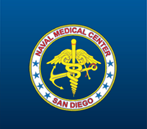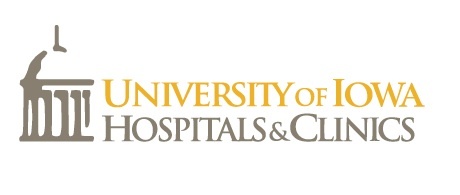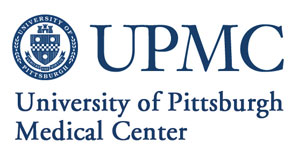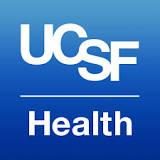Transtibial Amputation Outcomes Study
| Status: | Recruiting |
|---|---|
| Healthy: | No |
| Age Range: | 18 - 60 |
| Updated: | 6/28/2018 |
| Start Date: | March 2013 |
| End Date: | June 2022 |
| Contact: | Michael J Bosse, MD |
| Email: | michael.bosse@carolinashealthcare.org |
| Phone: | 704-355-6046 |
Transtibial Amputation Outcomes Study (TAOS): Comparing Transtibial Amputation With (Ertl) and Without a Tibia-fibula Synostosis Procedure
The goals of the TAOS study is to determine the best procedures for below the knee
amputations. There are two different procedures currently used by surgeons around the county:
the Erlt procedure and the Burgess procedure. Proponents of the Ertl procedure advocate that
the surgical formation of a tibia to fibula bone bridge provides stability, shape and weight
bearing capability to the residual limb that result in less pain and better prosthetic fit
and alignment. This procedure is popular especially among the military but it's advantages
over the Burgess procedure are not well supported by current research. This study aims to
compare the two amputation procedures in an adequately powered randomized trial.
amputations. There are two different procedures currently used by surgeons around the county:
the Erlt procedure and the Burgess procedure. Proponents of the Ertl procedure advocate that
the surgical formation of a tibia to fibula bone bridge provides stability, shape and weight
bearing capability to the residual limb that result in less pain and better prosthetic fit
and alignment. This procedure is popular especially among the military but it's advantages
over the Burgess procedure are not well supported by current research. This study aims to
compare the two amputation procedures in an adequately powered randomized trial.
High-energy open fractures, blast, gunshot wound and crush injuries to the distal tibia,
ankle, hind foot and midfoot are common challenges to military and civilian trauma surgeons
(Brown, 2009; Covey, 2002; Ficke, 2007; McGuigan, 2007; Hansen, 2001). Many surgeons believe
that an early transtibial amputation provides a better long term functional outcome than limb
salvage for these injuries (Hansen, 2001; Myerson, 1994; Sanders, 1992; Turchin,1999; Shawen,
2010;Ellington 2012). If a transtibial amputation is selected as the treatment for the
patient, a controversy remains regarding the appropriate amputation technique. Many surgeons
advocate for an amputation with a tibia-fibula synostosis technique (Ertl procedure) in young
and active patients, believing that this procedure provides a better prosthetic interface, an
end bearing capacity and soft tissue stability that improves performance and functional
outcomes. (Pinto 2004; Pinzur 2006; Commuri 2010). Others strongly advocate for a standard
posterior flap (Burgess procedure) without the synostosis, arguing that patients have similar
outcomes with fewer complications and lower costs. (Pinzur 2008; Tindle 2011) To date, the
outcomes of the transtibial amputation techniques have not been subjected to an appropriately
powered prospective randomized clinical trial.
The primary study objective is to compare functional outcomes and number of revision
surgeries to the amputated limb after first amputation for patients undergoing a transtibial
amputation and randomized to receive a tibia-fibula synostosis (Ertl procedure) versus a
standard posterior flap procedure (Burgess procedure).
The secondary study objectives are to compare levels of impairment for patients undergoing a
transtibial amputation and randomized to receive a tibia-fibula synostosis (Ertl procedure)
versus a standard posterior flap procedure (Burgess procedure); to compare levels of pain for
patients undergoing a transtibial amputation and randomized to receive a tibia-fibula
synostosis (Ertl procedure) versus a standard posterior flap procedure (Burgess procedure);
and to compare initial hospitalization and overall treatment costs (through the 18 month
follow-up) for patients undergoing a transtibial amputation and are randomized to receive a
tibia-fibula synostosis (Ertl procedure) versus a standard posterior flap procedure (Burgess
procedure). Patients who refuse randomization have the option of participating in a
prospective observational study and the type of amputation is decided by the surgeon and
patient.
ankle, hind foot and midfoot are common challenges to military and civilian trauma surgeons
(Brown, 2009; Covey, 2002; Ficke, 2007; McGuigan, 2007; Hansen, 2001). Many surgeons believe
that an early transtibial amputation provides a better long term functional outcome than limb
salvage for these injuries (Hansen, 2001; Myerson, 1994; Sanders, 1992; Turchin,1999; Shawen,
2010;Ellington 2012). If a transtibial amputation is selected as the treatment for the
patient, a controversy remains regarding the appropriate amputation technique. Many surgeons
advocate for an amputation with a tibia-fibula synostosis technique (Ertl procedure) in young
and active patients, believing that this procedure provides a better prosthetic interface, an
end bearing capacity and soft tissue stability that improves performance and functional
outcomes. (Pinto 2004; Pinzur 2006; Commuri 2010). Others strongly advocate for a standard
posterior flap (Burgess procedure) without the synostosis, arguing that patients have similar
outcomes with fewer complications and lower costs. (Pinzur 2008; Tindle 2011) To date, the
outcomes of the transtibial amputation techniques have not been subjected to an appropriately
powered prospective randomized clinical trial.
The primary study objective is to compare functional outcomes and number of revision
surgeries to the amputated limb after first amputation for patients undergoing a transtibial
amputation and randomized to receive a tibia-fibula synostosis (Ertl procedure) versus a
standard posterior flap procedure (Burgess procedure).
The secondary study objectives are to compare levels of impairment for patients undergoing a
transtibial amputation and randomized to receive a tibia-fibula synostosis (Ertl procedure)
versus a standard posterior flap procedure (Burgess procedure); to compare levels of pain for
patients undergoing a transtibial amputation and randomized to receive a tibia-fibula
synostosis (Ertl procedure) versus a standard posterior flap procedure (Burgess procedure);
and to compare initial hospitalization and overall treatment costs (through the 18 month
follow-up) for patients undergoing a transtibial amputation and are randomized to receive a
tibia-fibula synostosis (Ertl procedure) versus a standard posterior flap procedure (Burgess
procedure). Patients who refuse randomization have the option of participating in a
prospective observational study and the type of amputation is decided by the surgeon and
patient.
Inclusion Criteria:
- Patients requiring a unilateral transtibial amputation following major limb trauma
regardless of when the injury occurred
- The injury and its treatment must meet the following criteria:
- The residual fibula is not fractured or if fractured, is stabilized by internal
fixation allowing for either the Ertl or Burgess procedure
- Proximal tibia/fibula joint is stabilized
- Soft tissue coverage allows for atypical closure and skin graft <100 cm2
- Amputation will result in a residual limb that is ≥10 cm from joint line to end
of tibia
- Ages 18 and 60 inclusive
Exclusion Criteria:
- At time of consent, patient has a Glasgow Coma Scale (GCS) motor score of 0-4 or a GCS
motor score of 5 with a significant traumatic brain injury (defined as an AIS code of
5 or 6)
- Patients with wound closure requiring a free tissue transfer
- Fibula fractures proximal to the tibial bone cut that cannot be stabilized
- Late amputation with presence of one of the following conditions: (i) infection within
the zone of injury; (ii) chronic regional pain syndrome; (iii) post-traumatic
thrombophlebitis
- Patient has a spinal cord deficit
- Patient has a previous leg or foot amputation or is non-ambulatory pre-injury
- Patient has third degree burns on >10% total surface area affecting the study limb
- Patient has a documented psychiatric disorder
- Patient is unable to speak either English or Spanish
- Severe problems with maintaining follow-up (e.g. patients who are prisoners or
homeless at the time of injury or who are intellectually challenged without adequate
family support).
- Patient has an amputation to one or both upper extremities (excluding digits)
- Patient is outside hospital's catchment area
- Patient follow-up is planned at another medical center
We found this trial at
29
sites
3551 Roger Brooke Drive
Fort Sam Houston, Texas 78234
Fort Sam Houston, Texas 78234
Principal Investigator: Patrick Osborn, MD
Click here to add this to my saved trials
1648 Pierce Dr NE
Atlanta, Georgia 30322
Atlanta, Georgia 30322
(404) 727-5640

Principal Investigator: William Reisman, MD
Emory University School of Medicine Emory University School of Medicine has 2,359 full- and part-time...
Click here to add this to my saved trials
1000 Blythe Blvd
Charlotte, North Carolina 28203
Charlotte, North Carolina 28203
(704) 355-2000

Principal Investigator: Michael Bosse, MD
Click here to add this to my saved trials
2500 N State St
Jackson, Mississippi 39216
Jackson, Mississippi 39216
(601) 984-1000

Principal Investigator: Pat Bergin, MD
University of Mississippi Medical Center The University of Mississippi Medical Center, located in Jackson, is...
Click here to add this to my saved trials
750 Highland Avenue
Madison, Wisconsin 53792
Madison, Wisconsin 53792
Principal Investigator: Paul Whiting, MD
Click here to add this to my saved trials
1211 Medical Center Dr
Nashville, Tennessee 37232
Nashville, Tennessee 37232
(615) 322-5000

Principal Investigator: William T. Obremskey, MD, MPH
Vanderbilt Univ Med Ctr Vanderbilt University Medical Center (VUMC) is a comprehensive healthcare facility dedicated...
Click here to add this to my saved trials
620 John Paul Jones Cir
Portsmouth, Virginia 23708
Portsmouth, Virginia 23708
(757) 953-5008

Principal Investigator: Christopher Smith, MD
Naval Medical Center - Portsmouth Naval Medical Center Portsmouth, Virginia has proudly served the military...
Click here to add this to my saved trials
34800 Bob Wilson Dr,
San Diego, California 92134
San Diego, California 92134
(619) 532-6400

Principal Investigator: James E Toledano, MD, MC, USN
Naval Medical Center - San Diego We are the largest and most comprehensive military healthcare...
Click here to add this to my saved trials
4501 North Charles Street
Baltimore, Maryland 21210
Baltimore, Maryland 21210
Principal Investigator: Robert O'Toole, MD
Click here to add this to my saved trials
8901 Rockville Pike
Bethesda, Maryland 20889
Bethesda, Maryland 20889
(301) 295-4000

Principal Investigator: Wade Gordon, MD
Walter Reed National Military Medical Center The Walter Reed National Military Medical Center is one...
Click here to add this to my saved trials
2500 Metrohealth Dr
Cleveland, Ohio 44109
Cleveland, Ohio 44109
(216) 778-7800

Principal Investigator: Heather A Vallier, MD
MetroHealth Med Ctr The MetroHealth System is one of the largest, most comprehensive health care...
Click here to add this to my saved trials
111 S Grant Ave
Columbus, Ohio 43215
Columbus, Ohio 43215
(614) 566-9000

Principal Investigator: Benjamin Taylor, MD
Grant Medical Center Founded in 1900 in Columbus' downtown, Grant has grown into one of...
Click here to add this to my saved trials
Click here to add this to my saved trials
Hershey, Pennsylvania 17033
Principal Investigator: J. Spence Reid, MD
Click here to add this to my saved trials
Houston, Texas 77030
Principal Investigator: Joshua Gary, MD
Click here to add this to my saved trials
650 Eskenazi Avenue
Indianapolis, Indiana 46202
Indianapolis, Indiana 46202
Principal Investigator: Jeffrey Anglen, MD
Click here to add this to my saved trials
Click here to add this to my saved trials
200 Hawkins Dr,
Iowa City, Iowa 52242
Iowa City, Iowa 52242
866-452-8507

Principal Investigator: Lawrence Marsh, MD
University of Iowa Hospitals and Clinics University of Iowa Hospitals and Clinics—recognized as one of...
Click here to add this to my saved trials
Miami, Florida 33101
Principal Investigator: Gregory A Zych, MD
Click here to add this to my saved trials
Minneapolis, Minnesota 55414
Principal Investigator: Andrew Schmidt, MD
Click here to add this to my saved trials
1100 N. Lindsay
Oklahoma City, Oklahoma 73104
Oklahoma City, Oklahoma 73104
(405) 271-4000

Principal Investigator: David Teague, MD
University of Oklahoma The OU Health Sciences Center is composed of seven health-related colleges located...
Click here to add this to my saved trials
200 Lothrop St
Pittsburgh, Pennsylvania 15213
Pittsburgh, Pennsylvania 15213

Principal Investigator: Gele Maloney, MD
University of Pittsburgh Medical Center UPMC is one of the leading nonprofit health systems in...
Click here to add this to my saved trials
Providence, Rhode Island 02903
Principal Investigator: Roman Hayda, MD
Click here to add this to my saved trials
Click here to add this to my saved trials
3635 Vista Avenue
Saint Louis, Missouri 63110
Saint Louis, Missouri 63110
Principal Investigator: Lisa Cannada, MD
Click here to add this to my saved trials
505 Parnassus Ave
San Francisco, California 94143
San Francisco, California 94143
(415) 476-1000

Principal Investigator: Theodore Miclau, MD
University of California, San Francisco Medical Center UCSF Medical Center is recognized throughout the world...
Click here to add this to my saved trials
Seattle, Washington 98104
Principal Investigator: Doug Smith, MD
Click here to add this to my saved trials
Tampa, Florida 33606
Principal Investigator: Anjan Shah, MD
Click here to add this to my saved trials
1 Medical Center Blvd
Winston-Salem, North Carolina 27103
Winston-Salem, North Carolina 27103
(336) 716-2011

Principal Investigator: Robert Teasdall, MD
Wake Forest University Baptist Medical Center Welcome to Wake Forest Baptist Medical Center, a fully...
Click here to add this to my saved trials